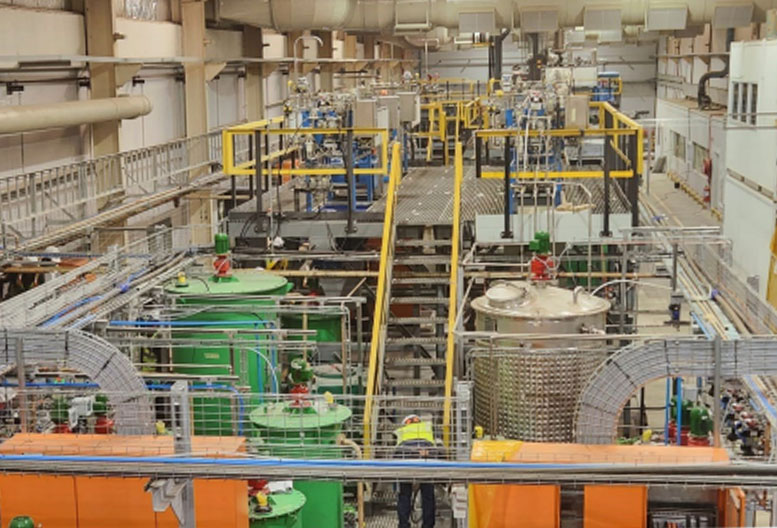Manganese is a hard, brittle, silvery metal that plays a crucial role in various industries, particularly in metallurgy. While it is too brittle to be useful as a pure metal, manganese is indispensable as a component in alloys, especially in steel production. Typically, steel contains about 1% manganese, which significantly enhances its strength, workability, and wear resistance. Manganese steel, which comprises around 13% manganese, is renowned for its extreme toughness and is utilized in applications such as railway tracks, safes, rifle barrels, and prison bars.
Manganese in Alloys and Beyond
Beyond steel, manganese is vital in the production of aluminum alloys, where it improves corrosion resistance. It also finds applications in highly magnetic alloys when combined with aluminum, antimony, and copper. The industrial uses of manganese extend further; manganese (IV) oxide serves as a catalyst, a rubber additive, and a decolorizing agent in glassmaking. Manganese sulfate is essential for fungicide production, while manganese (II) oxide is used in fertilizers and ceramics.
Biologically, manganese is crucial for all living organisms. It is a component of various enzymes, including those responsible for oxygen production during photosynthesis. Humans typically consume about 4 milligrams of manganese daily through foods such as nuts, cereals, tea, and parsley. A deficiency in manganese can lead to weakened bones and increased susceptibility to fractures. According to the Periodic Table’s overview, manganese is the fifth most abundant metal in the Earth’s crust, with significant deposits found in China, Africa, Australia, and Gabon.
Global Market Dynamics: Manganese Demand and Supply Trends
The manganese market has experienced significant shifts over the past year, influenced by changing demand from traditional industries and emerging technologies. Demand from the electric vehicle (EV) sector has notably increased, as automakers increasingly adopt manganese-rich chemistries like lithium-manganese-iron-phosphate (LMFP) to reduce reliance on nickel and cobalt. However, the market has also faced challenges due to oversupply conditions, particularly as Chinese steel demand fell short of expectations.
Reports indicate that manganese sulfate prices turned bearish in late 2024 due to slow spot buying in China and weather-related supply disruptions in Australia. Despite these pressures, analysts project a long-term recovery in manganese demand, driven by new battery chemistries that will continue to fuel growth into the 2030s, even as China’s supply base remains dominant in the short to mid-term.
According to projections, global manganese demand is expected to grow from 27.4 million metric tons in 2023 to 39.3 million metric tons by 2030, marking a compound annual growth rate of 5.3%. While manganese remains integral to traditional steel production, its role in battery manufacturing is anticipated to expand steadily, supported by advances in mining, refining processes, and sustainability efforts across the sector.
Key Players in the Manganese Market
As the demand for manganese continues to rise, several companies are positioning themselves to meet future needs. While global supply chains are currently dominated by China, new projects and expansions in regions such as Australia, Africa, and North America aim to diversify sources and reduce reliance on a single supplier base.
Electric Metals (USA) Limited
Electric Metals (USA) Limited is a U.S.-based mineral development company focused on advancing domestic production of high-purity manganese products. The company’s flagship asset, the Emily Manganese Project in Minnesota, is recognized as the highest-grade manganese deposit in North America. The project has outlined approximately 6.2 million tonnes of inferred resources at 19.3% manganese and is expected to support a mine life of at least 20 years.
Electric Metals is also pursuing vertical integration through plans to construct a 100,000 tonne-per-year high-purity manganese sulfate monohydrate (HPMSM) production plant in the U.S. The company’s strategic positioning has been bolstered by recent U.S. government initiatives aimed at reducing dependence on imported critical minerals.
Giyani Metals Corp.
Giyani Metals Corp. has emerged as a vertically integrated developer of battery-grade manganese, crucial for electric vehicle batteries. The company’s K.Hill project in Botswana offers a much-needed alternative for Western OEMs seeking secure, low-carbon sources of manganese. With a strong infrastructure and key authorizations secured, Giyani aims to ramp up production of high-purity manganese oxide and high-purity manganese sulfate monohydrate.
Aftermath Silver Ltd.
Aftermath Silver Ltd. is developing the Berenguela project in Peru, which features a unique mix of silver, copper, and high-purity manganese sulfate monohydrate. This polymetallic deposit is strategically positioned to address Western supply chain needs while advancing a significant silver resource. The company is progressing toward a preliminary economic assessment that will evaluate its ability to deliver both precious and battery metals from a single source.
Manganese X Energy Corp.
Manganese X Energy Corp. aims to become North America’s first domestic producer of high-purity manganese sulfate monohydrate. The Battery Hill project in New Brunswick is one of North America’s largest manganese carbonate deposits, uniquely positioned to fill a major supply gap. The company’s patent-pending purification process allows for the direct production of battery-grade HPMSM, which is critical for electric vehicle batteries.
Conclusion
Manganese is not just a critical component in steel production; its applications are expanding rapidly in the electric vehicle and battery markets. As global demand for manganese continues to grow, companies are strategically positioning themselves to meet future needs, particularly in North America. With significant deposits and innovative projects underway, the manganese industry is poised for a transformative shift that could reshape supply chains and enhance sustainability in the years to come.




